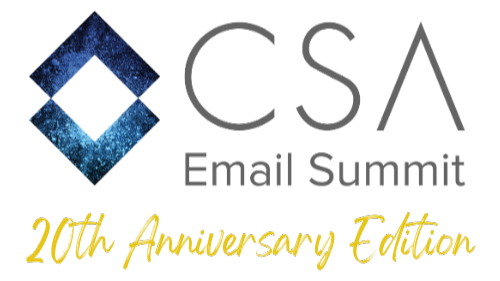CSA Digital Email Summit 2020
How to use BIMI as a Brand – from the idea to GoLive
How to use BIMI as a Brand – from the idea to GoLive
Romina Gansbühler – Junior-Marketing-Manager, Witt-Gruppe
Peter Scholzuk – Head of Department Email Marketing, Witt-Gruppe
The Witt-Gruppe’s journey towards implementing BIMI (Brand Indicators for Message Identification), an open standard which enables the display of brands‘ logos as sender icons in email inboxes, started a few years ago at the CSA Summit with Microsoft’s Terry Zink. His presentation of this new option for brands to increase their visibility while simultaneously improving domain security and deliverability was inspiring. Major companies like Google, Microsoft and Yahoo were working together to help reduce spam and help branding measures in just one move. It sounded easy; a reward for doing your (email security) housekeeping, so implementing SPF, DKIM and DMARC. If you implement all of the recommended safety measures, then the improved brand visibility is the cherry on top.
However, as an email marketer, it wasn’t an easy topic to convince others to implement. And it can’t be done on your own. The first people to bring on board are the email security officer and the domain administrator. It needs to be a cross-departmental project. Management also need to back the project to approve the time and resources needed to implement such a project. Finally, your email service provider (ESP) needs to support you in implementing BIMI (and if they haven’t heard of BIMI and don’t appreciate the of deliverability, it is time to change ESPs). Your ESP also needs to be prepared to trouble-shoot and contact ISPs to resolve any technical issues that could arise.
The email marketing team at the Witt-Gruppe manged to convince their stakeholders by showing them how dangerous it was to not do anything. They spoofed their CEO live during a presentation with a phishing email and got immediate buy-in for the BIMI project.
Start by making a plan and allowing enough time for implementation. Some companies have hundreds of domains and they all need to be configured individually. This all needs time. Make responsibilities clear; who is responsible of configuring the settings, who for monitoring? We advise using a monitoring tool during the phase of cleaning up domains as it’s very complex. Even once all of the configuration is done, regular housework is required and needs to be planned for. Records and settings need to be constantly checked and amended. It’s also important to disseminate knowledge about the email security measures taken throughout the company and ensure that not only one or two people know what the standards are and how to maintain them. Establish a knowledge base and write it into the company’s DNA.
The successes so far
Since implementing SPF and DMARC, cyber attacks have reduced dramatically, e.g., from around 3.000 phishing emails per day down to 10 – 50 per month. If DMARC is activated, cyber criminals who are trying to use your domain receive notifications to that effect, give up and move on to easier, more profitable targets.
Since implementation, deliverability is flawless. Most of the time, it’s at 100% and our open rates are great. While only a few mailbox providers (MBPs) currently display BIMI logos, this will grow and the measures taken for BIMI improve the brand’s overall reputation.
BIMI really adds to brand awareness. A study conducted among Witt-Gruppe users showed that seeing the brands’ logos in their inboxes improves the perceived trustworthiness of the brands, makes users more likely to open the emails and then to make a purchase.
The next steps planned are rolling out BIMI to a new subsidiary and creating and implementing a standard setup for the whole Otto group. The BIMI team is continuing to disseminate awareness and knowledge about email security standards to all relevant stakeholders throughout the Witt-Gruppe. A further important task to encouraging ESPs, ISPs and other brands to adopt BIMI to build a united front against spammers.

